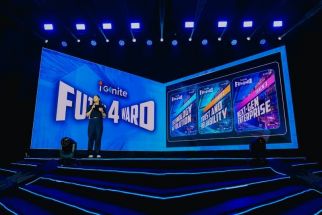Kai Design: Like a Jewelry Box

February 22, 2003 | 12:00am
 Architect Anna Maria Sy offers the best argument in favor of minimalism. "I find so much solace in minimalist spaces because Manila is so chaotic," she says. "You walk out, there’s traffic, people, jeepneys. You walk into a minimalist space, it feels calming."
Architect Anna Maria Sy offers the best argument in favor of minimalism. "I find so much solace in minimalist spaces because Manila is so chaotic," she says. "You walk out, there’s traffic, people, jeepneys. You walk into a minimalist space, it feels calming."
This feeling of quiet is much more appreciated when the space is located right smack in the middle of an area where people tend to go all at the same time. Imagine the new Greenbelt complex on a Friday or Saturday night. Then imagine a space where you can catch your breath, comfortably enjoy food descended from a culture that brought us Zen, and surrounded by people enjoying each other’s company.
The latest offering from the dynamic tandem of Ricco Ocampo and Rikki Dee is such a place. Kai restaurant, which specializes in Japanese cuisine with Pacific Rim influences, has interiors that are interesting, intimate and fun. If the two restaurateurs’ first venture, Kitchen restaurant, is a casual, lively place, Kai is a fine-dining haven without the snooty factor but with a sense of understated elegance.
As expected, Ricco and Rikki didn’t go the beaten path in their first fine-dining venture. Instead of going to architects or interior designers who have had much experience in restaurant design, they went the other way. Ricco says, "We wanted someone new in terms of restaurant design, someone who hadn’t designed a restaurant yet, but who’s had a lot of experience in architecture."
"We wanted somebody who epitomizes a very serene lifestyle. We wanted it to be very subdued and very Zen," Ricco adds, even as the interiors subvert Zen decor used in every commercial space in town.
Anna Sy and her design firm, C/S Design Consultancy, fit the bill to a T. Anna earned her undergraduate degree and master’s degree from Harvard, and is managing director of C/S Design, a firm with offices in Manila and Connecticut. Her partner, Jason Chai who was also trained in Harvard, takes care of the Connecticut office.
"I met Ricco and Ricky socially," says Anna, who moved back to Manila in 1995 after 13 years of studying and working in the US, including a two-year stint at the design firm skidmore, Owings & Merrill. "They came to us because they had seen one of the houses that we designed which they liked very much."
Anna had seen the team’s collaboration on Kitchen and comments, "I think it’s nice. Ricco has a very strong design sense. He knows what he likes. He’s done it enough to know how to implement it."
There’s something about Kai that tells you it’s going to be different from the other restaurants (which are also designed quite nicely) and that it’s going to be such fun dining there. After all, that’s what the name means: Gathering. A place to be with friends and lovers.
If you look at the restaurant row from the end of the Greenbelt 2 walkway – flanked by colonnades on one side and restaurants on the other – it seems to appear that Kai took a step back from the row, like it’s waiting for you to walk by and then you’re jolted into seeing it: Oh, there you are.
"The entrance is set back and we did that on purpose," explains Anna. "All of the other restaurants have the front right there and then ours goes in and draws people in."
To compare the element of surprise upon entering the restaurant to being given a piece of unexpected jewelry from someone is very apt since this was exactly what Anna Sy had in mind when she designed the place: A jewelry box.
"We wanted a dark palette and then we put in punches of ivory. So it feels like a jewelry box that’s in very dark wood and once you open it, it’s lined with soft velvety material."
For that, Anna needed two things: A dramatic light design and a material that would bring out the intended effect. The lighting was not very easy to design, she admits. "This is all experimentation for us. We had to go through different mock-ups to get the effect that we wanted. At night it’s pretty successful."
Indeed, Kai sparkles when the moon comes out. Its interior spaces are framed by very dark wood – grayish with a faint tinge of green, which wasn’t supposed to be that way, she chuckles, but it turned out to match the upholstery in the end – and then punctured by nooks with very bright, dramatic halogen lights. From afar, it beckons passersby looking for something new to try out.
The sparkle does not just come from the light sources. On the walls are capiz shells made to look like mosaic. Though Kai is a Japanese restaurant, the look is more global with an Asian feel to it and that’s where the capiz comes in. Real capiz shells, mind you – not resin or fiberglass – with all their sheen, uneven coloring and imperfections.
"We wanted to use capiz in a different way. I think it’s a very beautiful material that hasn’t really been explored. The idea was to highlight the capiz, so we used dark wood to create contrast. Again, just like a jewelry box."
Another unique thing about Kai is that it’s the only restaurant on the row with a vestibule. You don’t enter through doors in center (that would "give away the drama") but rather through a door on the side with a clear glass wall – almost like a giant fish tank from the outside – so if you’re standing there waiting to be seated, people passing by can see you.
Indeed, when you enter from the vestibule and then come around to the center, you see the entire length of the restaurant – and hey, look, that’s you reflected in the mirror at the back wall – lit by seemingly floating, leaf-shaped, fiberglass lights on the ceiling.
And here you will notice a difference between Kai and the other Greenbelt 2 restos: the mezzanine level is located along the length of the restaurant, not at the back, which makes it very rectilinear and giving the illusion that it’s longer than it really is.
"The whole idea of having the mezzanine this way is that everyone sees each other, so when you want to sit upstairs, you have to walk the whole length of the restaurant and then you go up. You know, Manila is all about seeing people and being seen. When they go to restaurants, they like to see who’s there. We put a mirror at the end so that when you’re walking down, you even see who’s looking at you," says Anna with a laugh.
For table accents, there are colorful fighting fish in square mini-fish bowls with river stones on every table. Artworks are soon to come, too, as Anna and the owners are looking at several possibilities.
So how important is restaurant design in attracting customers? "It’s important in making them feel comfortable," Anna Sy says. "You design a space that’s appealing, that’s visually not offensive, and they feel comfortable and the food is really good – that makes the perfect recipe."
Ricco Ocampo and Rikki Dee’s love of food, Japanese food especially, is legendary. Their favorite places are the stuff of a gourmet’s dreams and a dieter’s nightmares. When the two are in New York, they never fail to visit their favorite restaurants and one of these is Nobu, which is owned by chef Nobu Matsuhisa, Robert De Niro and Tribecca Grill’s Drew Nieporent. About two years ago, Ricco on behalf of Asia Society invited the Filipino chefs of Nobu – Ricky Estrellado, Gilbert Pangilinan, Rex Soriano, Pierre Angeli Dee and Mike Yap – to do a series fundraising dinners in Manila. So the chefs came, cooked and conquered.
Today, they have gone on different paths. Gilbert, for instance, has moved back to Pampanga and opened a restaurant at Robinsons Starmills while Rex is moving out of New York and last year did some consultancy work for Kitchen. But all five have gathered once more to collaborate on Kai’s menu.
Ricco describes the food as "Fifty percent traditional Japanese and 50 percent a fusion of the five chefs’ innovations." You can imagine the kind of dishes these Filipino chefs – trained at the New York Restaurant School and the Culinary Institute of America – are whipping up in Kai’s kitchen.
Anna Sy says the cuisine was also a consideration in her design. "I think the experimentation that we did is appropriate for Kai because even though it’s a Japanese restaurant, they have certain things on the menu that are more experimental. They also want to infuse a bit of Filipino into the Japanese food, so then what does it become? It’s not a distinctly traditional Japanese restaurant in terms of food and design."
This may be the secret to Ricco Ocampo and Rikki Dee’s success: They experiment with new concepts and ideas, but always they go with the tried and tested when it comes to people.
BrandSpace Articles
<
>




















